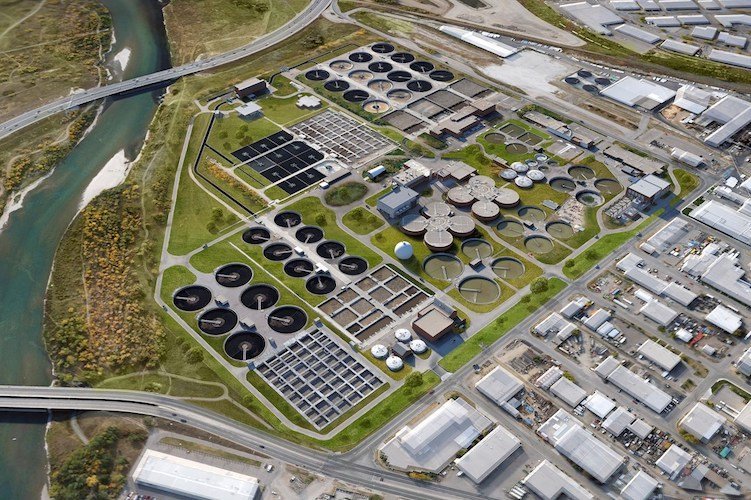Most major construction projects in the water and wastewater industry have conventionally been delivered through a design-bid-build (DBB) method of delivery. However, collaborative project delivery (CPD) methods are being considered more frequently in the public sector because they can provide a variety of benefits over traditional delivery methods such as time and/or cost savings. It is important to recognize that these benefits sometimes come with trade-offs, such as reduced control or change in risk, so the pros and cons of each CPD method need to be weighed.
City of Calgary, Bonnybrook Plant D Expansion
First, let’s look at the project. The Bonnybrook Plant D Expansion is a CDN$600 million capital expansion to an operational wastewater treatment plant. The project consists of retrofits to existing infrastructure and the construction of new large-scale infrastructure for both the liquid and solid streams. The project includes dozens of contracts for major scopes of work, hundreds of tie-ins to the operating facility, and required a multitude of permits and approvals.
Due to the size, complexity, and tight implementation timeline, it was highly beneficial to divide the project into several smaller work packages. Reasons for this include optimizing scheduling of the various project elements, limiting disruption to facility operations, mitigating space constraints, and leveraging resources to the greatest extent possible. This approach would result in cost and time savings for the project, and there would be opportunities for more local vendors and contractors.
Collaborative Project Delivery Methods
There are numerous drivers—some applicable to the owner, some specific to the project—that are considered when determining the most appropriate delivery method. For this project, a series of workshops with various City stakeholder teams determined the following drivers were the most important:
- Qualifications-based selection of contractors
- Shortened project schedule
- Work sequencing of multiple construction contracts
- Integration with operations on an active WWTP site
- Constructability input through design
- Flexibility to align scope with project affordability goals
- Early negotiation of pricing
- Risk allocation control
- Major equipment procurement schedule
Of the five project delivery methods identified, three were eliminated because they severely limited the City’s control over the project.
| Delivery Method | Suitable | Comments |
|---|---|---|
| Design-Bid-Build (DBB) |  |
Current City standard. Has been successful on many projects in the past |
| Design-Build (DB) | Risk due to limited ability to influence design to integrate with the existing wastewater infrastructure | |
| Construction Management At Risk (CMAR) |  |
Good applicability, however, would require new procurement processes to be established |
| Public-Private-Partnership (PPP or P3) | Evaluation completed through Building Canada Fund tool determined project was not a good fit for this delivery model. P3 favors DBO model, which may have risks as outlined below. | |
| Design-Build-Operate (DBO) | High risk due to loss of owner control of design and operations. Risk to integrate private sector ops/maintenance into existing plant |
Selecting a Project Delivery Approach
Once the project drivers and applicable CPD methods were identified, an evaluation matrix was developed to quantitatively compare the two methods (DBB and CMAR) based on six primary criteria:
- Ability to meet schedule
- Work sequencing of multiple contracts
- Cost certainty and future market risk
- Resource availability
- Scope flexibility to City affordability and cash flow
- Coordination of construction, engineering, and operations
Selection of the preferred delivery approach was largely based on the prioritized driver of schedule vs cost certainty and available cash flow such that:
- Preferential consideration be given to CMAR, if the priority driver was deemed to be meeting the tight timeline; whereas:
- The DBB approach was preferential if the primary driver is for cost certainty, protection from future market fluctuation, and need to delay cash flow expenditure beyond upcoming budget cycles. However, this approach did require the project schedule be extended by a year or more.
Based on the results of the quantitative analysis and subsequent workshop discussions, CMAR was selected. This selection provided numerous benefits, particularly related to contractor input during design and the coordination of construction activities on site. The division of the project into separate work packages has given the team flexibility to prioritize key infrastructure that is required to meet the needs of Calgary’s growing population, while postponing non-critical scopes to defer expenditures during this economic downturn. Construction of the Bonnybrook Plant D Expansion began in 2016 and is expected to be complete in 2024.

